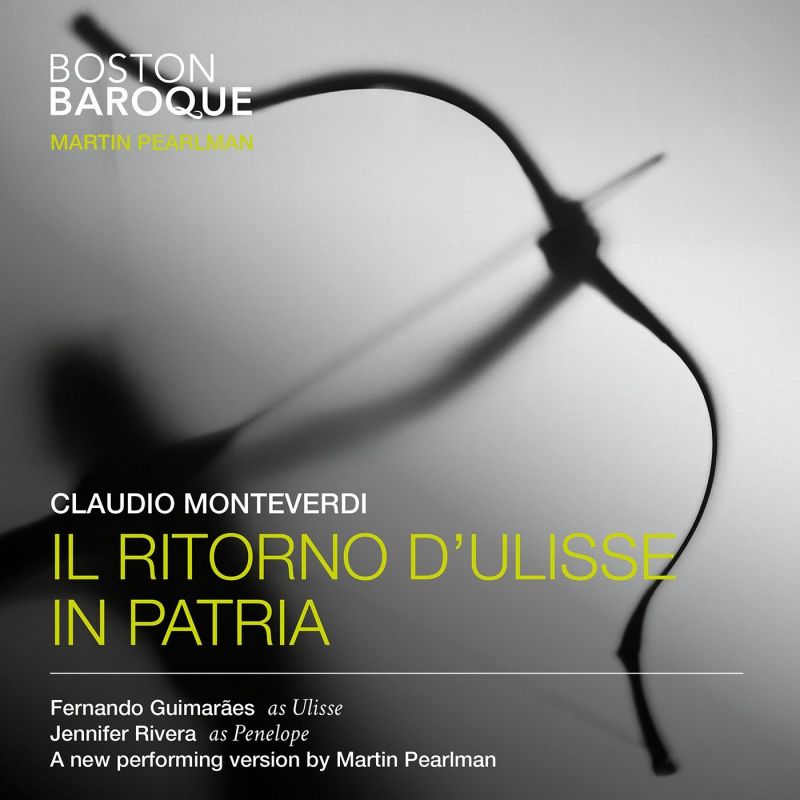MONTEVERDI Il ritorno d'Ulisse in patria
View record and artist detailsRecord and Artist Details
Composer or Director: Claudio Monteverdi
Genre:
Opera
Label: Linn
Magazine Review Date: 06/2015
Media Format: Super Audio CD
Media Runtime: 176
Mastering:
DDD
Catalogue Number: CKD451

Tracks:
| Composition | Artist Credit |
|---|---|
| (Il) Ritorno d'Ulisse in Patria |
Claudio Monteverdi, Composer
Aaron Sheehan, Telemachus, Tenor Abigail Nims, Mélantho, Mezzo soprano Boston Baroque Christopher Lowrey, Human Frailty; Sailor, Countertenor Claudio Monteverdi, Composer Daniel Auchincloss, Eumete, Tenor Daniel Shirley, Eurimaco, Tenor Fernando Guimaraes, Ulysse, Tenor Jennifer Rivera, Penelope, Mezzo soprano João Fernandes, Time; Neptune, Bass Krista River, Ericlea, Mezzo soprano Leah Wool, Minerva, Mezzo soprano Marc Molomot, Iro, Tenor Martin Pearlman, Conductor Owen McIntosh, Jupiter, Tenor Sara Heaton, Cupid; Choir, Soprano Sonja DuToit Tengblad, Fortune; Juno, Soprano |
Author: David Vickers
Martin Pearlman’s amiable essay observes that there cannot be a single ‘correct’ way to bring about an effective interpretation of this problematic score. In principle his performing edition inclines towards the anachronisms of the interventionist brigade but in practice he often values economical understatement. Orchestral parts have been composed to accompany singers in various scenes that present moments of heightened emotion, and concise ritornellos are sprinkled copiously with recorders and cornetts (both unlikely to have been used in Venetian operas during the 1640s). Boston Baroque’s large continuo group has two harpsichords, organ (using a reedy regal registration whenever Neptune sings), two theorbos (one sometimes playing a guitar) and a cello – although the copious use of melodic bowed bass in recitatives is contentious.
The cast respect the poetic eloquence and dramatic sense of Giacomo Badoaro’s libretto, although recitation could have been more freely conversational. Fernando Guimarães as a multi-dimensional Ulisse exploits his rich middle register. Jennifer Rivera deftly conveys the predicaments of the long-suffering Penelope. The contrast between the kindly shepherd Eumete (Daniel Auchincloss) and the parasitical glutton Iro (Marc Molomot) is characterised vividly, and Aaron Sheehan’s more effortless tenor suits the youthful Telemaco. The trios for Penelope’s despicable suitors Anfinomo, Pisandro and Antinoo are aptly characterised but over-egged by some old-fashioned vibrato and approximate intonation; brief ritornellos between their attempts to draw Ulisse’s bow would have been just as effective played by only strings (instead of the cornucopia of recorders and cornetts). Less satisfactory is the brief madrigalian passage featuring voices from heaven and the sea, which sounds like a grand operatic chorus warbling pompously from the bottom of a deep well. Pearlman’s vision does not offer perfect answers but no individual performance has ever got everything right – and it is always a pleasure to become reacquainted with the most under-appreciated of Monteverdi’s three extant operas.
Discover the world's largest classical music catalogue with Presto Music.

Gramophone Digital Club
- Digital Edition
- Digital Archive
- Reviews Database
- Full website access
From £8.75 / month
Subscribe
Gramophone Full Club
- Print Edition
- Digital Edition
- Digital Archive
- Reviews Database
- Full website access
From £11.00 / month
Subscribe
If you are a library, university or other organisation that would be interested in an institutional subscription to Gramophone please click here for further information.




